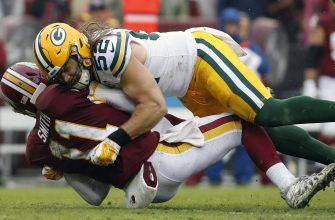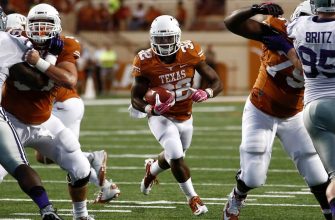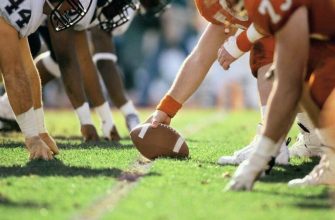A kicker is a specialized position in American football and Canadian football responsible for kicking field goals and extra points (known as converts in Canada). The kicker is typically one of the smallest members of the team, as there is no requirement for size or physical strength beyond the ability to kick a ball accurately over long distances.
Kicking duties are generally divided between a placekicker, who handles field goals and extra points, and a kickoff specialist, who handles kickoffs to begin each half or following scores. Some teams employ separate punters as well, while other kickers handle all three responsibilities. The kicker’s job is simply to put the ball between the uprights on field goal and extra point attempts, or to kick the ball as far as possible on kickoffs and punts. Accuracy, leg strength, finesse, timing, and mental toughness are all critical skills.
While often overlooked, the kicker plays an incredibly vital role, as games frequently come down to crucial field goals or extra points in key situations. The splitter of the uprights can instantly turn from hero to goat based on the success or failure of a single kick, making it one of the most pressure-packed positions in sports. The importance of the kicker continues to increase as offenses improve and games become higher-scoring, requiring successful kicks to maximize scoring opportunities.
Role of the Kicker
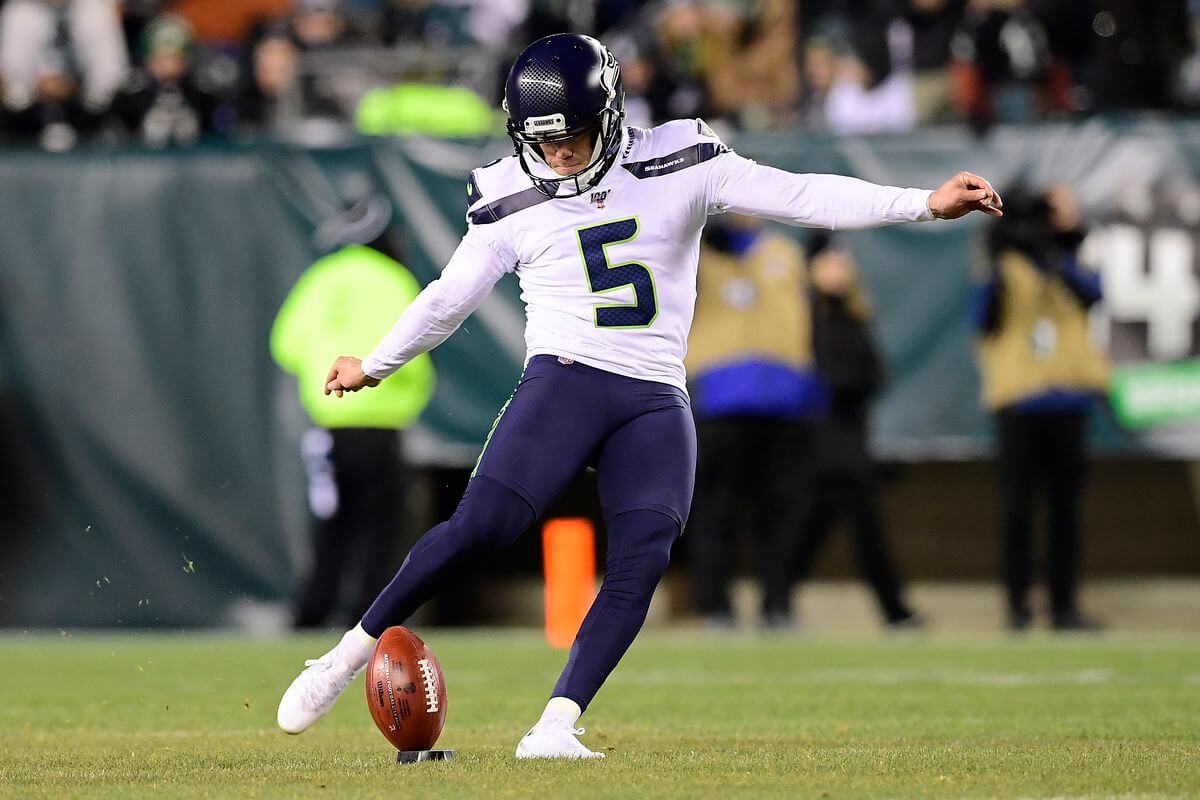
The kicker is one of the most specialized and important roles in football.
The main responsibilities of a kicker are:
- Placekicking – This involves kicking field goals and extra points. Kickers are brought out anytime the offense gets within reasonable field goal range or scores a touchdown to attempt the extra point. Kickers score points with their leg and footwork. Good kickers are accurate from 40+ yards.
- Kickoffs – The kicker starts play at the beginning of each half and after scores by kicking off. Kickoffs require leg strength to boot the ball downfield. Kickers aim to pin opponents deep with good hangtime and directional kicks.
- Punting – Some kickers are exclusively placekickers while others handle all kicking duties including punting. Punters kick the ball on 4th down to flip field position. Punting requires technique to angle kicks and pin opponents.
So in summary, the kicker is the designated specialist who kicks field goals, extra points, kickoffs, and for some, punts. Their role is critical to scoring points and influencing field position. Kickers can make or break a team with their reliability and range.
Types of Kicks
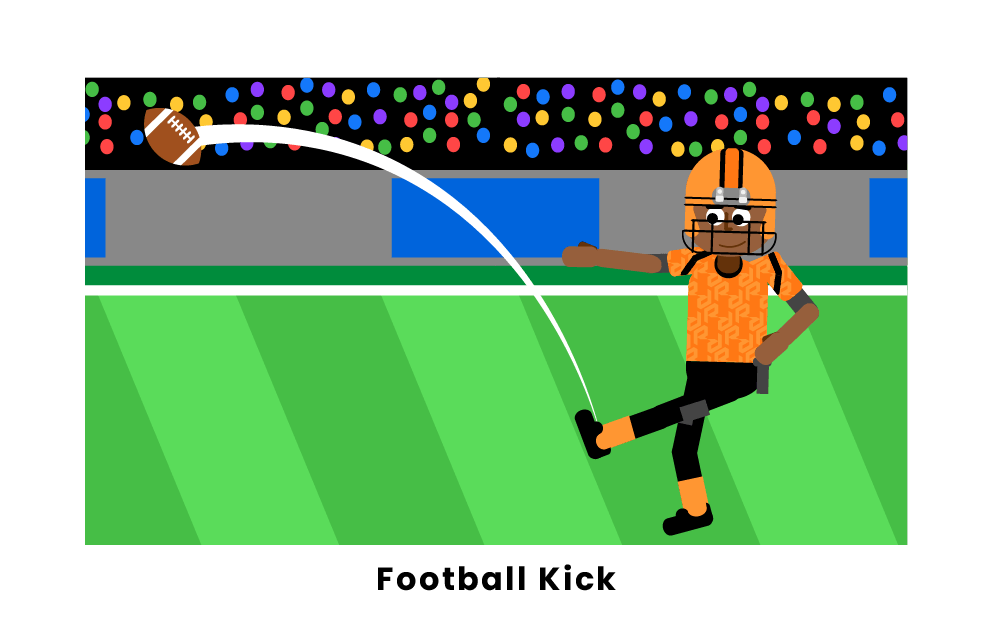
The kicker is responsible for making several different types of kicks during a football game:
Field Goals
Field goals are kicks aimed at scoring 3 points by kicking the ball through the upright goal posts behind the end zone. Field goals can be attempted from anywhere on the field once the ball crosses the line of scrimmage. The difficulty of the kick depends on the distance – short field goals from 20-30 yards are easier, while kicks 45+ yards are challenging. Successful field goal kickers are accurate from 40+ yards.
Kickoffs
Kickoffs happen at the start of each half and after touchdowns or field goals are scored. The kicker kicks the ball from the 35-yard line high and deep, ideally into the opponent’s end zone for a touchback. Kickoff specialists focus on power and hang time to maximize distance and allow their coverage team to get downfield.
Punts
Punts happen on 4th down when a team elects to kick the ball away to the opponent rather than attempting to get a 1st down. The punter stands 15+ yards behind the line of scrimmage and kicks a high, deep spiral downfield. Punters aim to pin opponents deep in their own territory. Good punts have 45+ yards of distance and 4+ seconds of hang time.
Extra Points
After a touchdown is scored, the scoring team attempts an extra point kick from the 15-yard line. This is almost always successful, so it’s nearly automatic points. Kickers focus on accuracy for these short kicks worth 1 point.
Skills and Abilities
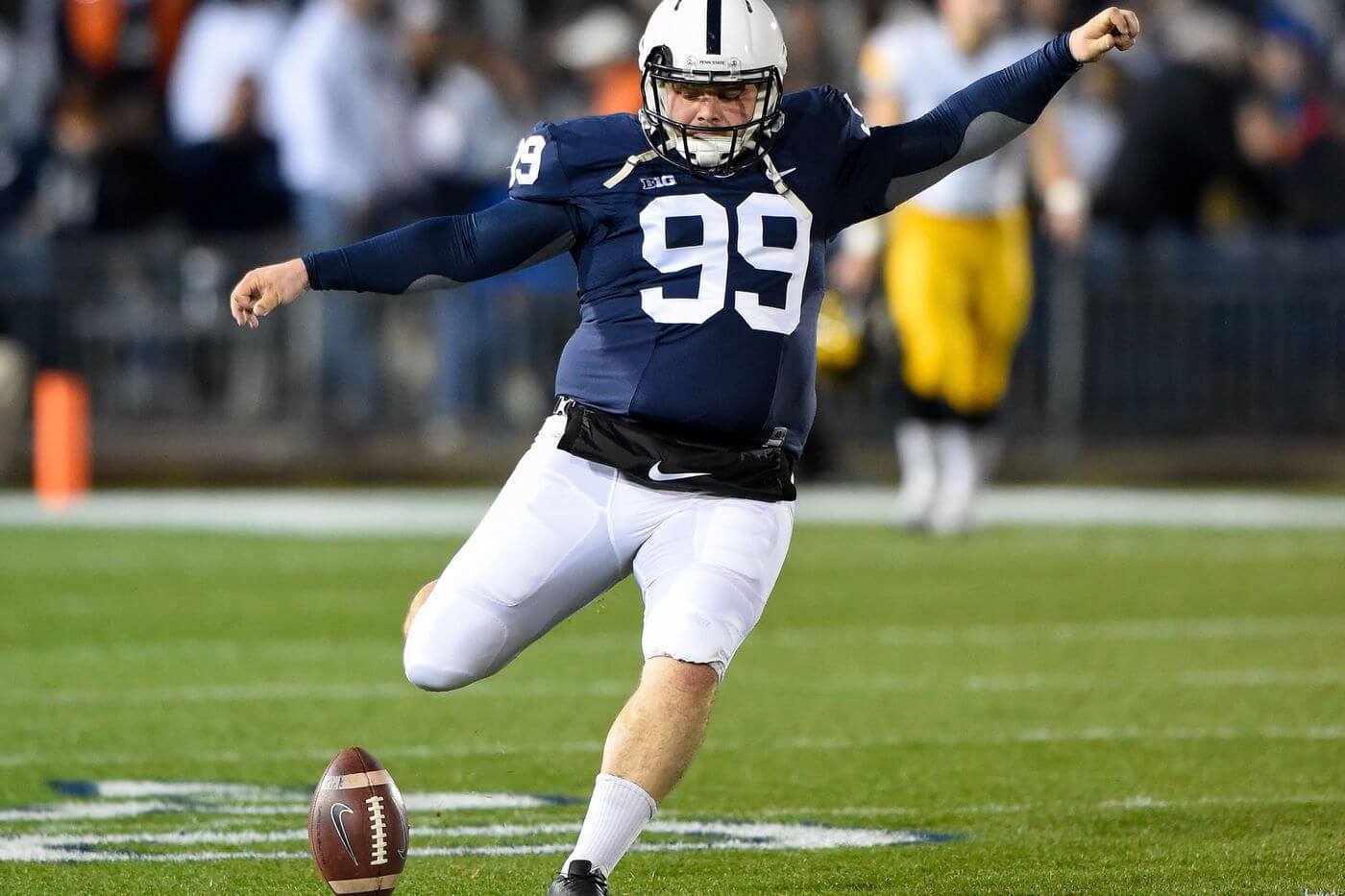
The kicker position requires a specialized and rare combination of skills and abilities. First and foremost, tremendous leg strength is needed to be able to kick the football with enough power to make long field goals and kickoffs. Kickers have some of the strongest legs in football, able to generate over 1,000 pounds of force on contact. This leg strength comes from extensive weight training focused on the quadriceps, hamstrings, glutes, and core.
Equally important as leg strength is kicking accuracy and technique. Kickers must be able to strike the ball cleanly and accurately, often aiming for very narrow goal posts. Proper kicking technique involves an angled approach, coordinated leg swing, and body lean to direct the ball. Kickers practice for hours refining their form to maximize accuracy. Particular attention is paid to developing a consistent striking motion and follow through.
The key skills for kickers are power, precision, and the ability to perform under intense pressure. Mental toughness and concentration are critical during key field goal attempts. The best kickers combine brute leg strength with finesse technique and grace under pressure.
Famous Kickers

Throughout the history of the NFL, there have been many legendary kickers that have left their mark on the league.
Here are some of the top kickers in NFL history:
- Adam Vinatieri – Vinatieri is considered one of the greatest kickers of all time. He played in the NFL for 24 seasons and holds the records for most career points scored (2,673), most career field goals made (599), and most overtime field goals made (12). He was a clutch kicker who helped the Patriots win 3 Super Bowls.
- Morten Andersen – Andersen was one of the most reliable kickers in NFL history, playing for 25 seasons. He held the record for most career field goals made until Vinatieri broke it. Andersen was selected to 7 Pro Bowls and is the all-time leading scorer for the Saints and Falcons.
- Gary Anderson – Anderson was the first NFL kicker to have a perfect regular season after going 35/35 on field goals in 1998 for the Vikings. He played 23 seasons in the NFL and retired as the league’s all-time leading scorer with 2,434 points.
- Tom Dempsey – Despite being born without toes on his kicking foot, Dempsey made one of the most memorable kicks in NFL history – a 63-yard game winning field goal in 1970 while playing for the Saints. The kick stood as the NFL record for longest field goal for over four decades.
- Justin Tucker – Tucker is the most accurate kicker in NFL history, making over 90% of his career field goal attempts. He holds the record for longest field goal ever at 66 yards. Tucker has been a crucial part of the Ravens’ success, making big kicks consistently for the team.
Kicker Salaries

How much do NFL kickers make?
Kickers are among the lowest paid players in the NFL, but they can still make a comfortable living. The average NFL kicker salary is around $1-2 million per year. However, salaries can vary widely based on experience and performance.
Rookie kickers typically earn the NFL minimum salary, which was $660,000 in 2023. Veterans with consistent accuracy and several years of experience can earn $2-5 million per season. The top kickers in the league make between $4-6 million annually.
Some of the highest paid kickers in 2023 include:
- Justin Tucker (Baltimore Ravens): $5,958,333 million
- Chris Boswell (Pittsburgh Steelers): $5,640,000 million
- Harrison Butker (Kansas City Chiefs): $5,105,267 million
- Younghoe Koo (Atlanta Falcons): $4,750,000 million
- Cairo Santos (Chicago Bears): $4,500,000 million
Kickers can earn additional income through performance bonuses. Bonuses are typically awarded for high field goal percentages, long field goals made, game-winning kicks, and Pro Bowl selections.
While not the highest paid NFL players overall, kickers earn significant salaries compared to the average US worker. Their specialized skills provide reliable scoring and an essential role on the team. With continued success, top NFL kickers can expect to earn multimillion dollar contracts.
Kicker Strategy
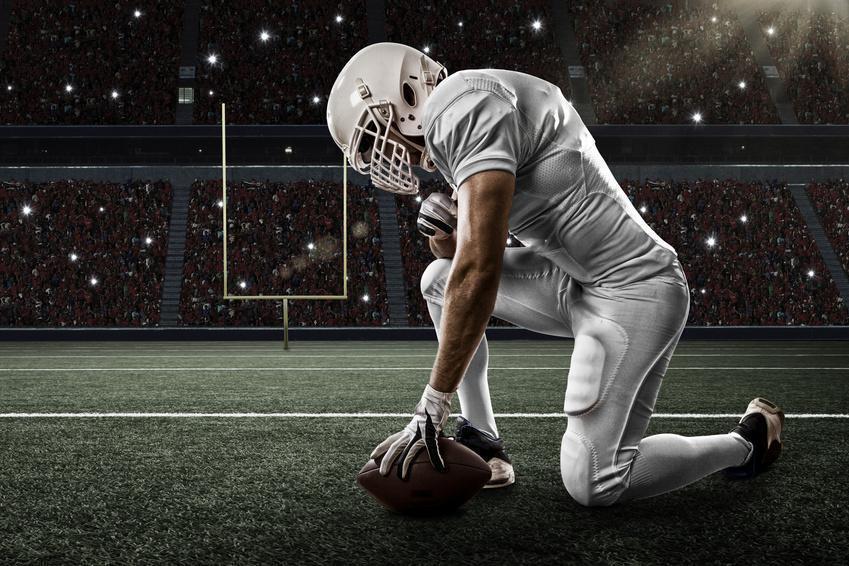
The strategy behind using a kicker depends greatly on the game situation and the strengths of the kicker. Coaches have to decide when it is advantageous to attempt a field goal versus going for a first down. Generally, once the offense reaches the opponent’s 30-yard line, a field goal attempt becomes a viable option. Inside the 10-yard line, a chip shot field goal is almost always the choice over risking a turnover.
Long range field goals of 50+ yards are more of a calculated risk/reward scenario. Coaches with an accurate long distance kicker may take more chances, while coaches with less confidence in their kicker’s leg may opt to punt or go for it on 4th down. Wind, weather conditions, and altitude also factor into the strategy.
When close to halftime or the end of the game, field goals can be a strategic choice to get points on the board and avoid the clock running out. Even if there is enough time left for additional plays, a made field goal puts immediate pressure on the opponent.
The element of surprise can produce game-changing fakes, catches, and two-point conversions on kicks. Savvy coaches pick key moments to dial up trick plays and catches the defense off guard.
Substituting in kickers based on distance and situation is common. Bringing in the long field goal specialist or employing kickers with different strong legs is part of the kicking platoon strategy. This allows coaches to maximize the odds of making kicks at different ranges.
Kicker Training
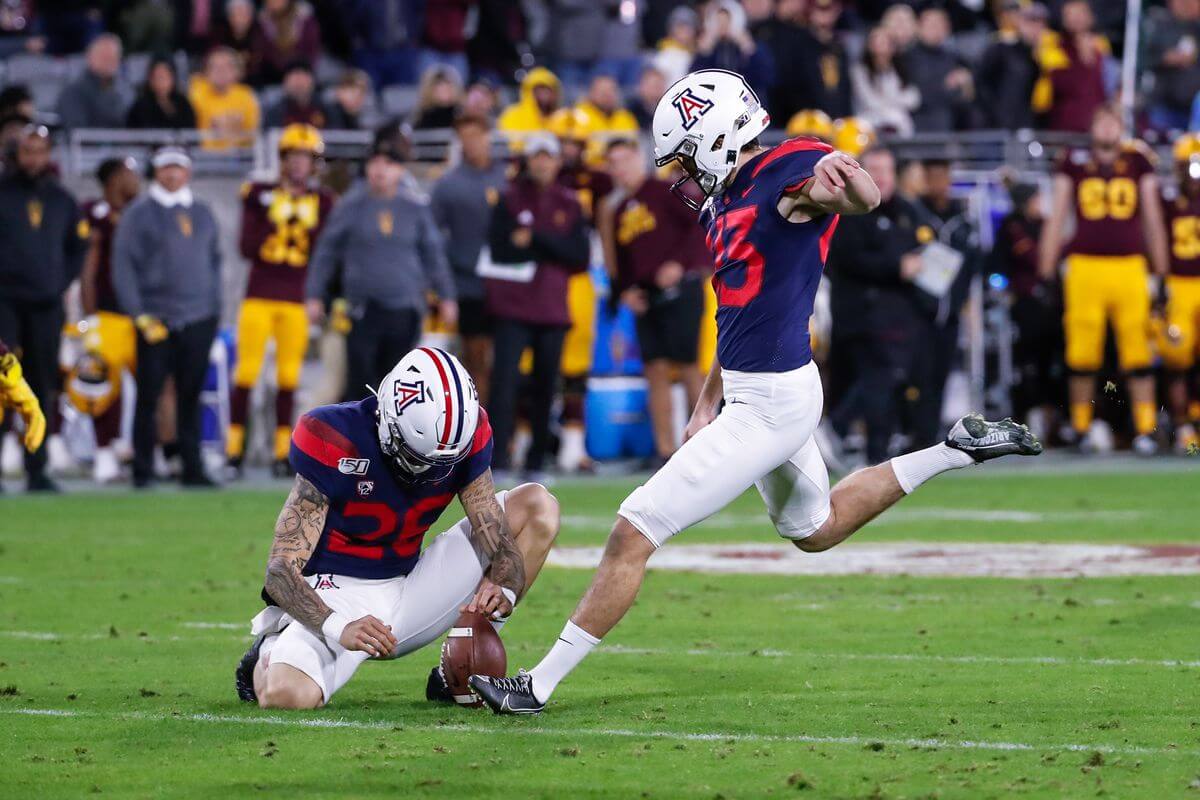
Kickers require extensive specialized training to perfect their craft. While offensive and defensive players focus on strength, speed and agility, kickers hone a very different set of skills.
Strength
Kickers need enough leg strength to drive the ball long distances, yet excessive bulk can reduce flexibility. Core strength and leg power are developed through weight routines targeting the quadriceps, hip flexors, abdominals and lower back. Exercises like squats, lunges, planks and leg presses help build kicking power.
Flexibility
Flexibility is critical for proper kicking mechanics and injury prevention. Kickers stretch thoroughly before and after workouts, focusing on the groin, hips, hamstrings and calves. Dynamic warmups with high leg kicks and holding extended stretches for 30 seconds help improve range of motion. Maintaining flexibility allows kicking from multiple angles.
Practice Drills
Repetition breeds consistency. Kickers spend hours refining technique through specialized drills. Positioning the plant foot, angling the hips and swinging the leg smoothly must become second nature. Drills like kicking for accuracy between narrow goal posts or targeting specific field locations refine muscle memory. Videotaping practice lets kickers analyze mechanics and make adjustments. Simulating crowd noise and distractions prepares for game day pressure. Mastering fundamentals through deliberate practice is vital.
Notable Kicking Moments

Some of the most memorable moments in football history have involved heroic kicks and game-winning field goals.
Here are some of the notable accomplishments by kickers over the years:
- In 1970, Tom Dempsey of the New Orleans Saints kicked a record 63-yard field goal to beat the Detroit Lions. This stood as the NFL record for decades until it was broken in 1998.
- In 1982, San Diego Chargers kicker Rolf Benirschke kicked an NFL-record 20 consecutive field goals over a 7 week period. This record lasted for over a decade.
- In 1991, Giants kicker Matt Bahr made a 42-yard last second field goal in the NFC Championship game to defeat the 49ers and send the Giants to the Super Bowl.
- Adam Vinatieri of the New England Patriots is renowned for making two last-second field goals in the playoffs to help the Patriots win Super Bowls in 2001 and 2003. His 48-yarder as time expired won Super Bowl XXXVI.
- In 2012, Justin Tucker of the Baltimore Ravens kicked a 47-yard field goal in double overtime to defeat the Denver Broncos in the AFC Divisional Playoffs. It was the longest overtime field goal ever.
- Younghoe Koo of the Los Angeles Chargers kicked a game-tying 44-yard field goal with 9 seconds left in 2017, only to then have his game-winning attempt blocked as time expired in a loss to Denver.
The intensity and pressure of succeeding or failing on these crucial kicks has created many unforgettable moments and has made kickers into heroes. More last-second thrills are sure to come in future games.
Future of Kickers
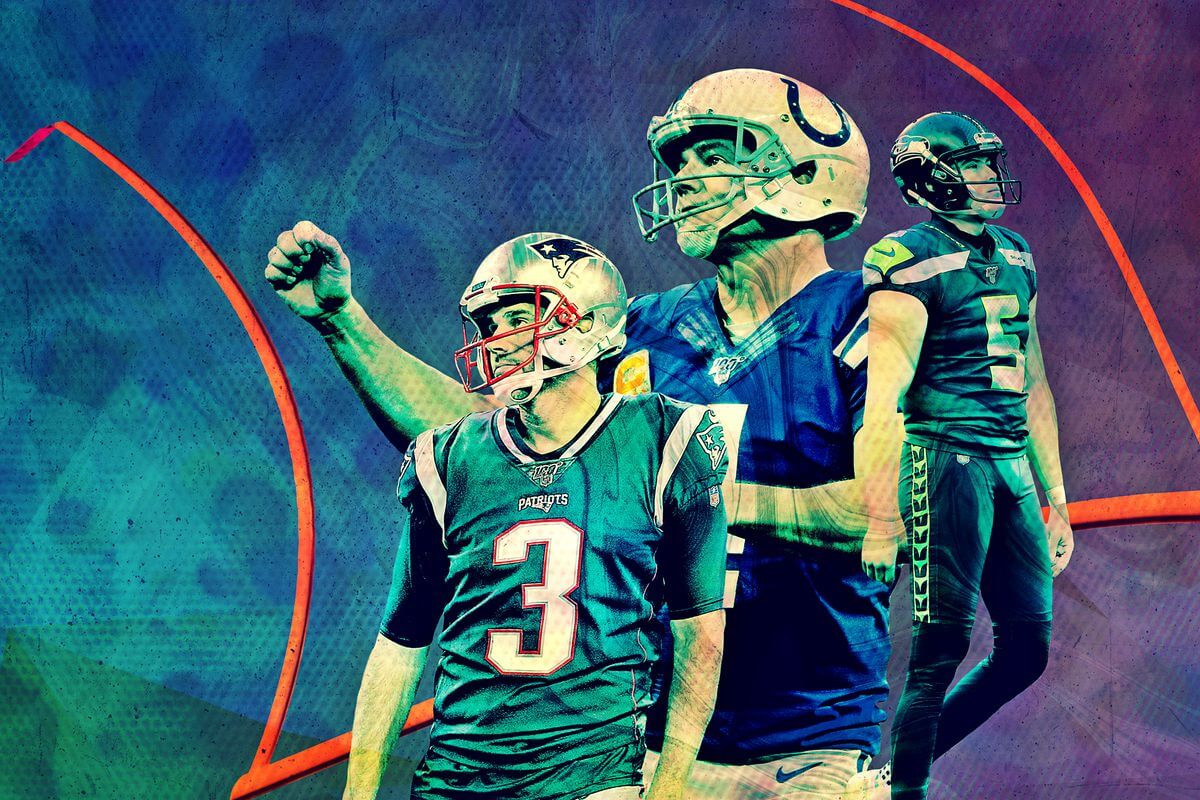
The role of kickers in football continues to evolve with changes in strategy and technology.
Some key trends to watch:
- Longer field goal attempts – With improvements in technique and stronger legs, NFL kickers are attempting field goals from longer distances. In 2021, Justin Tucker set a new league record with a 66-yard field goal. Expect 50+ yard kicks to become more common.
- Onside kick alternatives – The onside kick is becoming less effective with modern rules. Teams are experimenting with creative “onside” plays as alternatives after scoring, such as faking a punt. Innovation could make kickoffs more exciting.
- Robo-kickers – Several startups are developing robotic kicking machines. These could be used in training to improve consistency. In games, AI-powered robot kickers could theoretically never miss kicks. However, they aren’t allowed in the NFL currently.
- Virtual and augmented reality – VR simulators now allow kickers to practice in immersive simulated environments. AR visors can overlay positioning guides and aim points to improve technique. Tech could augment kicker accuracy.
- Genetic testing – Teams are utilizing genetic testing to identify prospects with elite kicking potential based on fast-twitch muscle fibers and flexibility. This could change how kickers are scouted and recruited.
- Rule changes – Adjustments to kickoff and extra point rules are constantly discussed. Further changes could increase emphasis on strategic kicking. Specialists may need to master multiple skills.
Kickers must stay adaptable, as technology and strategies evolve quickly. The ability to kick accurately under pressure will remain highly valued. Elite kickers who can master new innovations will be impact players.


